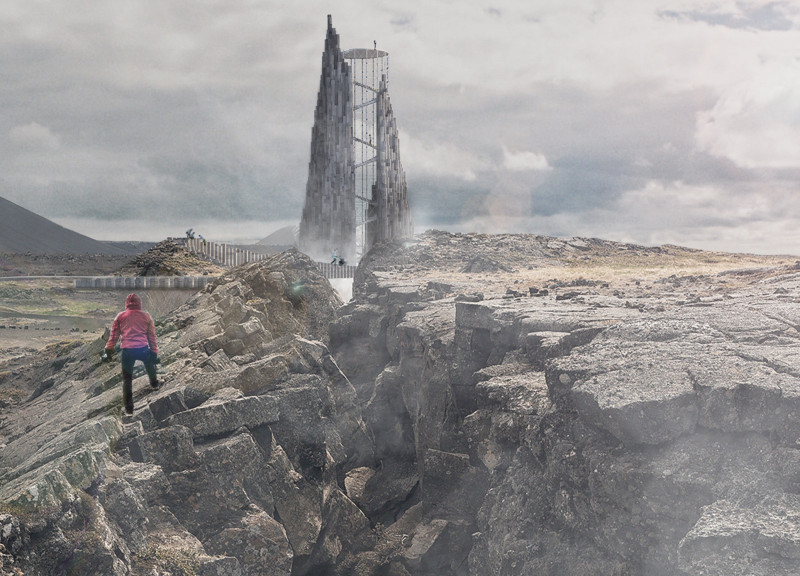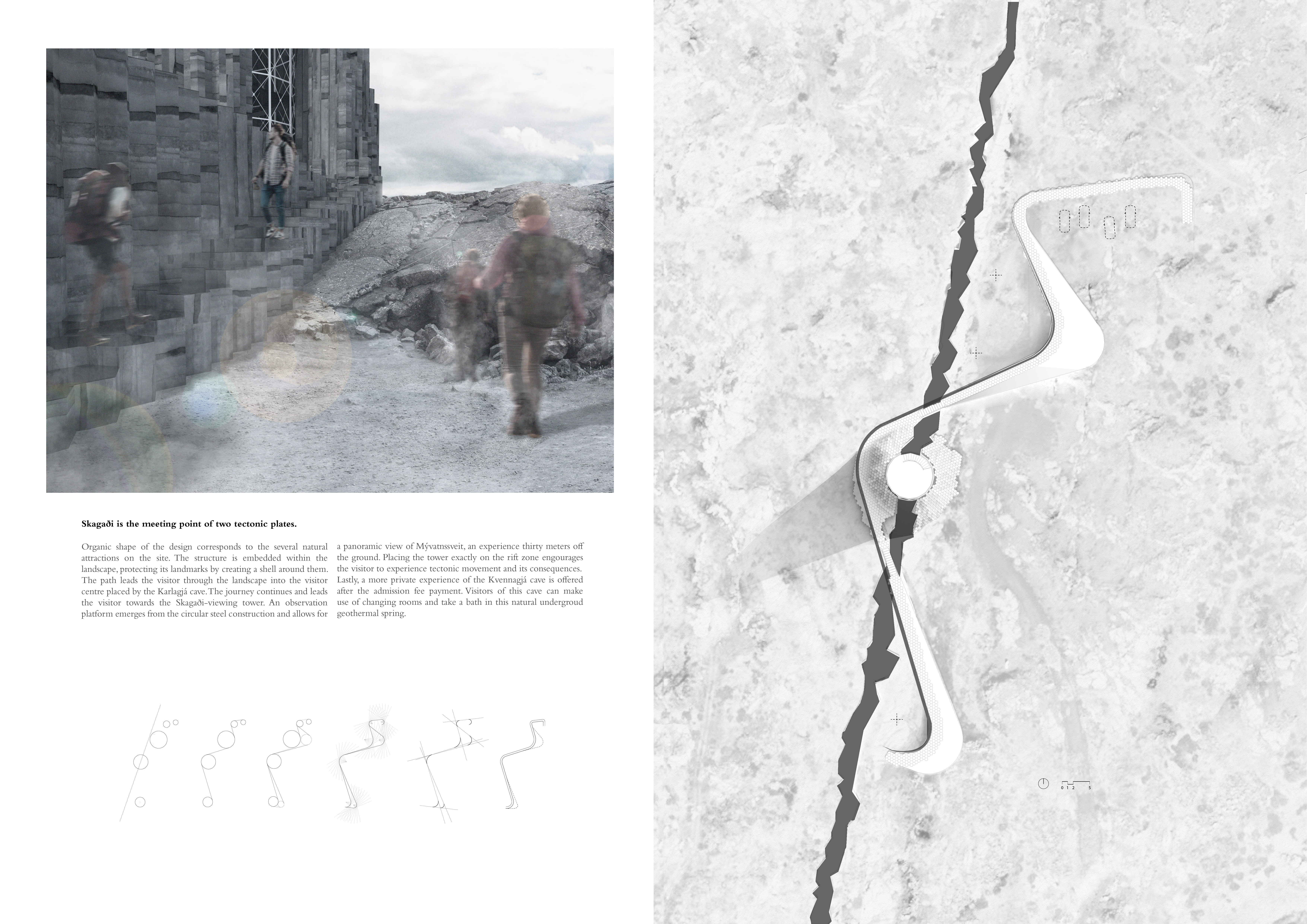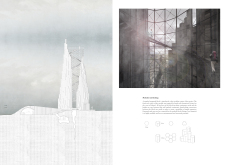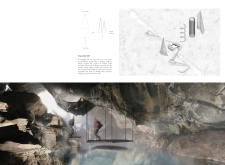5 key facts about this project
The primary function of the Skagabi project is to facilitate a connection between visitors and the surrounding environment. It offers an experiential journey through a series of pathways leading to various observation points, allowing individuals to engage with the geological features specific to Iceland. The architectural design prioritizes transparency and interaction, encouraging a deeper understanding of the region's unique geology.
Design Integration with Landscape
The architecture of Skagabi features an organic form composed of interlocking hexagonal blocks that rise from the terrain, mimicking the natural rock formations found throughout Iceland. This modular design results in a dynamic structure that captures varying views while remaining grounded in the landscape. The choice of rammed earth as a primary material, complemented by concrete and stainless steel elements, reflects both sustainability and a respect for local resources. The incorporation of expansive glass panels enhances the experience by providing unobstructed vistas of the surrounding geological features.
Unique design elements include the thirty-meter-high observation tower, which offers panoramic views of the tectonic divide. This tower is designed not only as a viewing platform but also as an architectural statement that emphasizes height and perspective. The pathways connect various areas of the site, creating a cohesive flow that guides visitors through the experience.
Educational Engagement and Geothermal Interaction
Skagabi is not merely a visual destination; it also incorporates interactive educational elements that explore geological principles. Visitors can learn about the unique tectonic activity of the region through informative displays and guided tours. The site integrates geothermal elements, providing opportunities for visitors to engage directly with natural geothermal springs. This feature enhances the educational aspect of the project, allowing an experiential understanding of the Earth's energy systems.
The overall design reflects a thoughtful approach to the interaction between architecture, education, and natural landscapes. By prioritizing sustainable building practices and local materials, the Skagabi project sets a precedent for future architectural endeavors that aim to harmonize with their environment.
For more insights into this project, including architectural plans, sections, and design ideas, explore the full project presentation to gain a comprehensive understanding of its unique architectural contributions.


























